Polycom Telepresence m100 Videoconferencing Client
Introduction
This report is one of an on-going series of evaluations of desktop videoconferencing software that is being produced by the Video Technologies Advisory Service (VTAS). The tests and evaluation have been conducted in accordance with the principles and procedures that you can read by following the link to the Overview of Videoconferencing Desktop software document.
PolyCom Telepresence m100 is a fully featured, standards compliant, desktop videoconferencing client that is capable of High Definition (HD) resolution[1]. It offers many of the features of a stand-alone videoconferencing appliance, but on a Microsoft® Windows® personal computer (PC). It was found to interoperate well with a number of different manufacturers’ equipment (including the market leaders: CISCO, PolyCom®, and LifeSize®) and it offered a very good quality experience in every case.[2] The software comes in one standard format.
Basic Details
Application: PolyCom Telepresence m100
Software Version Tested: Version V 1.0.0.8166_2451
Product Website:
Test Dates: July 2012
Testers: Geoff Constable and Shafiq Latif.
PolyCom Telepresence m100 (hereafter referred to as ‘m100’) is an application that can be installed on a PC or laptop running the Microsoft Windows operating system; and which allows users to make video and audio calls between other m100 users or any other software clients, or videoconferencing equipment, that support the H.323 or SIP standards. This makes it extremely versatile and fully compatible with JANET (UK)'s supported services. The client is easy to use, and offers many of the features found in dedicated videoconferencing equipment, including:
- H.239 data-sharing (sending the user’s desktop, in addition to the camera image)
- higher than standard resolutions (receive only).
- FECC
Telepresence
The term “Telepresence” refers to videoconferencing technologies that enable a user to feel that they are in the same location as the people that they are interacting with. It implies an immersive experience and is achieved by using high-cost, high quality, equipment in dedicated rooms often using dedicated private networks. In recent years companies have marketed much of their videoconferencing equipment as ‘Telepresence’ equipment. PolyCom have called this VC desktop client ‘Telepresence m100’ but it does not appear to be differentiated in any way from other videoconferencing desktop clients.
Costs
A fully featured version of the software can be downloaded and evaluated for 30 days at no cost. In order to activate the software thereafter, a License key must be purchased. A licence for each instance of m100 is required. The licence activation key is sold by PolyCom resellers (or their partners).
Standards and Security
PolyCom m100 supports a number of videoconferencing standards including H.323 version 4, and H.239 (data-sharing). The software is also fully compliant with Internet Engineering Task Force (IETF) Session Initiation Protocol (SIP) standards. The audio standards supported include the most basic (G.711) through to the high quality audio protocols G.722.1 Annex-C and AAC-LD. PolyCom’s own SIREN audio protocols are also supported.
Similarly, with video the required H.261 basic encoding is supported, as are H.263, H.263+ and H.264. H.264 is supported at the following resolutions: VGA transmit, 720p receive. It should be noted that the use of these formats is dependent on the bandwidth available on the network, and the particular PC hardware on which m100 is installed. Encrypted calls are possible using both the SIP and the H.323 clients. For encryption the standard H.235 (AES) encryption algorithm is used, making the software compatible with most other standards-based equipment. H.323 Annex Q is also supported for Far End Camera Control (FECC).
The issues that the H.323 protocol has in overcoming Network Address Translation (NAT) and communicating across a firewall are present (see the VTAS document NAT, Firewalls and Videoconferencing for a full explanation of these issues). However, it is possible to configure ‘NAT awareness into the software (‘Preferences – Call Settings’). The NAT configuration was not used during the testing reported here, and neither was the use of H.460 for traversing firewalls. The application’s supporting documentation says that H.460 is supported but this was not tested. The software uses a restricted set of ports to transport the audio and video media and it is possible for these ports to be configured manually by the user. This feature was not tested during the VTAS testing.
Installation
The program was downloaded from the PolyCom web site. The installation was simple and straight forward. The installation file (Polycom_Telepresence_m100_v1_0_0_setup.exe) was 37.4 MB. Before downloading it is necessary to tick a box in order accept a licence agreement. Once downloaded it is possible to run the software installer. If not already installed, the set-up process indicates that it is necessary to install Adobe AIR Runtime 2.0.
The PolyCom set-up is paused while the Adobe software is installed and then resumes.
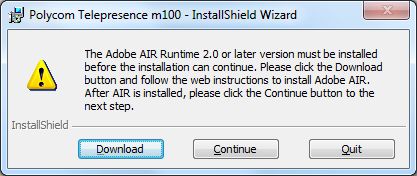
Figure 1. Adobe AIR 2.0 or later needs to be installed for m100 to run on the PC
Adobe AIR 3.3 (14.5 Mbytes) was downloaded and installed and then the PolyCom installation was resumed. The installation of m100 was then finished.
The program runs a "First set up wizard" on first use. During the installation the user is asked by Windows Security if they want to configure the Windows Firewall to allow “Call Control” to work through the firewall. It is advised that “Allow Access” should be selected for this and any other Firewall related security alerts, as the program will not function correctly without them.

Figure 2. Allowing the software through the Windows Firewall
When installation is complete the following message is seen:
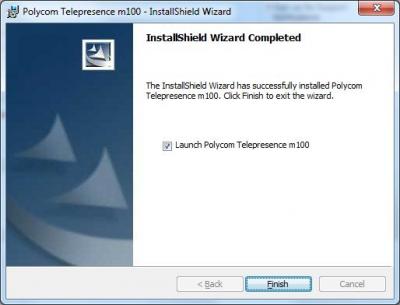
Figure3. Completion of Installation of the software
Documentation
There is extensive documentation available for the product. On the product website are various help documents:
- A “Quick Tips” file which explains the user interface symbols and icons and gives a brief overview of making a call and other basic functions. The Quick Tips pdf is designed to be a folding double-sided A4 sheet.
- A “Help Book”. This is a 105 page user and administrator guide which includes guidance on all configuration options. The ‘help’ section is 41 pages long and the rest of the document is copyrights and legal notices including license information.
- Release notes to accompany the current edition of the software. The release notes include a “getting started guide”; corrected issues since the last version of the software, known ‘Feature Limitations’ (what might be called bugs and issues with the software, that are known to PolyCom); hardware and software requirements for the m100 software to run, interoperability examples and other technical information.
- Online help accessed from the m100 program. This is found by either pressing the F1 keyboard key, or clicking the help option on the menu. It is a known limitation that this help does not work in the Google Chrome browser, but works fine in Firefox or Internet Explorer, and was found to have copious well-illustrated information.
There is an extensive knowledge-base available at the PolyCom website which includes answers to issues relating to the m100 software. All in-all there is a wealth of information available. The “Quick-Start” should be more than sufficient for average end-users once the software has been installed and set-up. For those configuring the software there is extensive information available in the help book and also in the program’s help files.
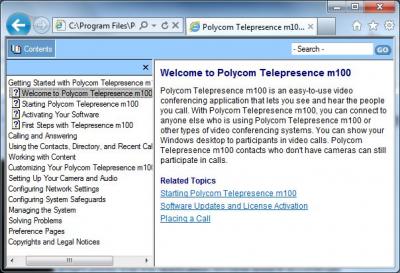
Figure 4. Online Help Files
User Interface
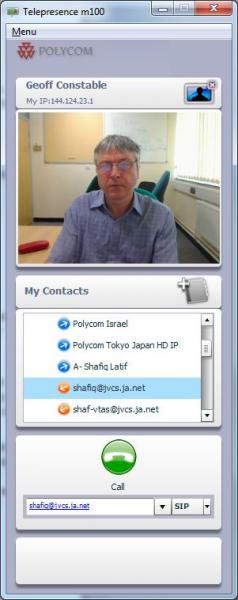
Figure 5. The m100 Interface
The m100 interface was found to be very easy to use, and is clean and uncluttered. It is immediately apparent what the elements of the user interface are. The interface consists of:
- A small summary section: user IP address; user name, show/hide local video button.
- The video window, which shows local video by default and shows remote video when in a call.
- My Contacts: an alphabetical list of contacts which is pre-populated with some PolyCom test addresses.
- The manual dialling call/hang-up area.
- An area of white space.
All of these features (apart from the video window) are always in view, and although in general they are all essential elements of a videoconferencing application it seems unfortunate that they cannot be out of view when not needed. It is not possible to change the user interface very much: it always remains the same size (although it can be moved or minimised). This keeps things simple but did lead to some minor criticisms of the user interface:
- When the video is hidden, the application window remains the same size and the ‘My Contacts’ section grows to fill up the missing video. This seems unnecessary, and some users might prefer that the application window shrank when there was no video to display.
- The ‘My Contacts’ is always listed alphabetically, meaning that some contacts are pushed to the bottom of the list even if they are called frequently. To overcome this one tester put an unnecessary ‘A’ before a colleague’s name to ensure that their name was always visible. The recent calls section provides an easy short cut to re-dial any calls made recently. It holds a list of the last 20 unique calls made (i.e. it only holds a single entry for a person you have rung many times).
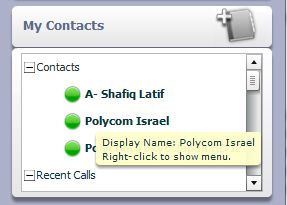
Figure 6. Artificially promoting a contact in the alphabetical list
- It would be useful to be able to re-size the application window to suit the user’s desktop and have more control over precisely what is displayed.
- The white space underneath the manual calling area is literally a waste of space. Perhaps it exists as a placeholder for some future functionality, but currently it appears to serve no purpose what so ever.
These are not major criticisms however. Because all configuration options are hidden, the m100 has a very simple and intuitive user interface. The use of tool-tips also assists, and the purpose of most icons was soon readily apparent. It was not necessary for the testers to consult any documentation at all in order to start using the software.
When in a call it is possible to maximise the video window, use in full screen mode, or resize the video window to any size preferred by the user. The video display is maintained while the window is resized, so the transition from one size of video window to another is smooth.
It is not possible to specify or control the call settings, for example the outbound video format. Video and audio encoding is auto-negotiated by the endpoint with the remote end with little user control, and there is no video test facility or video options in the configuration menu (there is no choice for the user to make between the prioritisation of sharpness and motion, for example). It is not possible to mute or pause the video sent during a call, as it is in some other desktop clients.
It is possible to turn the Picture-in-Picture (PIP) on or off, but it is not possible to control the size or placement of the local video PIP.

Figure 7. The software in full-screen mode, during a call with another m100 user

Figure 8. The user interface on the desktop. It is not possible to alter the size of the application’s window
The single menu makes accessing all configuration options very simple. They are simply laid out and it is apparent what each is for, making configuration of the software straight forward. There is an audio testing tool to assist the set-up of microphone and speakers.

Figure 9. The m100 menu
An unusual feature is the ability for the administrator to protect some of the configuration options with a password.
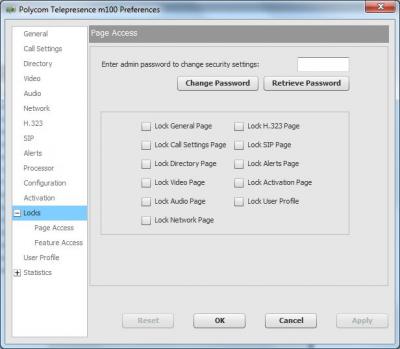
Figure 10. Password protection of configuration features
Connectivity
As mentioned above, it was necessary to change the settings on the firewall of the local PC. It would have also been necessary to change the settings on the organisation firewall to allow inbound and outbound calling without an H.323 gatekeeper; although this wasn’t attempted for these trials. There was no problem in registering with the local H.323 gatekeeper (which had firewall traversal implemented) and then dialling out (and being dialled) using the Janet Video Conferencing Service (JVCS) E.164 dialling scheme.
The software interoperated with the JVCS without any problem, and was able to pass a JVCS Quality Assurance (QA) test. It would be possible to register the PolyCom Telepresence m100 endpoint as a fully registered desktop venue on the JVCS. A number of successful test calls were made involving the JVCS, as well as many made point-to-point.
Successful point-to-point calls were made at various bandwidths, to a number of different manufacturers' equipment. In general interoperation with other modern systems was very good. See Appendix 2 for a list of all of the CODECs that the m100 called during these tests, what encoding was negotiated, and how successful the testing was.
Call Procedures
It is possible to make calls by both IP address and E.164 numbers. It is also possible to configure bandwidths according to the type of network connection that you have by selecting Menu/Preferences…/Network. It is not possible to change bandwidths on a per call basis without making this change each time.
The software allows you to choose whether or not to use an H.323 gatekeeper. Depending on their configuration, some gatekeepers do not allow calls to be made by IP address when the endpoint is registered to the gatekeeper. If this is the case, E.164 numbers will have to be used for dialling, or the software will need to be de-registered for the IP address to be dialled.
SIP capability was not tested during this evaluation.
Making a Call
There are a number of ways that call can be made. The most common scenarios will be:
- Manual dialling – enter the IP address or E.164 number of the remote party in the dialling area and click the green call button. The software auto-completes the address or name that you are using and offers the choices of completed numbers in a drop-down list.

Figure 11. Auto-completion of a dialled number
- From the Contacts list or Recent Calls list – select the person or number you wish to dial and click the green call button. Contacts can be created by right-clicking on “Contacts” or by selecting an entry in the Recent calls list and right-clicking it.
Data Sharing
The software uses the H.239 standard to share data with other m100 users (or other H.323 compliant endpoints). At 1920kbps the desktop sharing started very quickly and was of a very high quality. At 384kbps it was slightly slower but still very good.
The data sharing is easy to use, quick to start and is presented very clearly, but it is restricted when compared to similar desk-top clients, in that it only offers the possibility of full desktop sharing. It is not possible to share an individual application, window or region of the screen – it is the whole screen that is shared, or nothing. It was noted that sending data increased the load on the computer’s resources considerably, and it did appear to affect the quality of the video sent slightly at times. Because the incoming and outgoing video is displayed this can be resent as part of the data sharing which can be confusing and also means that the computer’s resources are taken up re-encoding the video displayed, so care should be taken to minimise video windows when data sharing.
Quality Testing
These tests were performed on the PC and equipment described in Appendix 1. It should be noted that tests are conducted on a live network and so any results could be the affected by the state of the live network at the time of testing.
Audio Tests
The standard equipment (i.e. headsets with microphones) was used for all of the audio and video tests.
Tests were conducted at 384kbps and 1920kbps bandwidth with the bandwidth capped and uncapped. The capped calls (at 384kbps) were set up to simulate an ADSL broadband connection.
Audio tests were conducted in a talking heads scenario, and in a scenario with movement and data sharing.
Video Tests
All tests were made with the picture at full screen. For the 1920kbps bandwidth calls, the bandwidth was set (using the software) at 1920kbps, for the 384 kbps calls a router was set up to restrict bandwidth to the required level, and bandwidth settings for the call were altered in the software to 384 kbps.
When using a USB microphone and speaker set, the Logitech® Webcam Pro 9000 and the Windows 7 PC in full screen mode, results were generally excellent, and it felt as though you were sitting in front of a dedicated unit rather than a PC running a software videoconferencing application.
All testing was done with a good quality Logitech pro 9000 camera and using a modern Windows 7 PC. The various test criteria are described in the 2012 version of the Evaluations Documentation [REF], and the detailed results are reproduced in Appendix 2.
Tests conducted:
All tests were conducted first at 384kbps and then repeated at 1920kbps.
Audio evaluation tests
Talking heads – the audio was consistently of good quality. The audio levels are not adjustable within the software although it is possible to check microphone and volume levels with the ‘Test audio devices’ function. The audio levels, audio quality and echo cancellation were of excellent quality throughout, and were all given top marks by both testers, with the bandwidth available making no difference to the scoring. This was true irrespective of whether the audio was part of a talking heads test or a talking heads with movement and data test. The only criterion on which the audio was given less than full marks was double-talk (both ends talking at the same time). This was because ‘clipping’ of speech was occasionally perceptible at 384kbps.

Figure 12. The audio test allows the user to react to the visual representation of the microphone gain but there is no control of the gain levels. Volume can also be reviewed
Constant movement both ends with shared data – as mentioned above, adding the movement and data sharing to the calls did not impact at all on the test results. The audio still scored top marks throughout with the single exception of a slightly perceptible occasional stutter when double talking.
In general the audio consistency and quality were of a very high standard. The m100 negotiated a version of the SIREN audio encoding algorithm (SIREN LPR – Lost Packet recovery) in point-to-point calls that made a noticeable difference to the clarity of the audio.
Video evaluation tests
It was noted that the software used VGA (640 x 480 pixels) as the video format when in calls at 1920kbps but QVGA (320 x 240 pixels) when calling at 384kbps. This meant there was less video data to send but resulted in a slightly ‘softer’, less defined image.
Talking Heads, 384kbps – The quality was generally good for both testers although lack of lip synchronisation with speech, and some blockiness was slightly perceptible.
Talking Heads, 1920kbps – The quality was consistently excellent with the software scoring 1’s on every criterion.
Movement and data, 384kbps – At this bandwidth there was some slight deterioration in quality and testers noticed some lip synchronisation issues. There was also some blurriness and blockiness, although this was not constant, and generally the hardware and software coped very well with the extra load.
Movement and data, 1920kbps – The issues noticed in the previous test seem to be a result of the low bandwidth, rather than limitations of the hardware or software, and at 1920 kbps, the software scored well on all criteria, although, (as at 384kbps) blockiness and object persistence were slightly perceptible on occasions.
Conclusions
PolyCom m100 is an excellent desktop videoconferencing client. With sufficient bandwidth and in full-screen mode it successfully emulates an H.323 CODEC. It handles low bandwidth very well and supports a wide variety of audio and video encoding standards. The picture and audio quality were consistently of a very high standard. In the opinion of the testers, however, to call the experience Telepresence is still inaccurate as the experience is not as if you are in the same room as the remote caller.
This fully standards compliant software worked well with all but one of the other H.323 compliant endpoints that we used in the testing process. It also interoperated with the JVCS and would have no problem passing a JVCS QA test. It also offers SIP which was tested and worked fine.
The user interface is kept clean and simple. Configuration options are clearly laid out. But there is some wasted space in the user interface and also a lack of user control over the interface itself.
However, the user doesn’t have a fine degree of control of the encoding algorithms and other video and audio formats that the software selects as is available in other desktop videoconferencing products. This may not be a consideration for many users, and it does help to keep the options and interfaces simple; but some users would appreciate having the options available.
Pros:
- Turns a PC into a videoconferencing unit effectively and affordably
- Compatible with JVCS, H.323 endpoints and SIP (SIP not tested)
- Excellent quality High Definition (720p) received
- Clean, simple, intuitive user interface
- Allows desk-top sharing with camera image
- Consistently good quality audio sent and received throughout testing
- Fully featured trial version available
Cons:
- User interface inflexible
- No recording facility
- Only shares the desktop – not specific applications running on the desktop.
- No native widescreen support – can result in cropped or letterboxed video
Appendix 1 – Description of the PCs and cameras used for the testing
During all the tests, the PC specifications (at both ends) were as follows:
Windows 7 PC
Purchased in the spring of 2009, this is a Dell™ OptiPlex™ 360 series PC. It has an Intel® Core™2 Duo processor E7400 running at 2.80GHz. It has 4GB of Random Access Memory (RAM) and a 150GB New Technology File System (NTFS) hard drive. It is running Windows 7 Professional Edition and has a Windows Experience Rating of 3.5 [check]
The attached USB camera is a Logitech® Webcam Pro 9000 – a near top-of-the-range camera at the time of purchase (2009).
This system is intended to replicate an average priced typical PC purchased in 2009 to be used for videoconferencing.
Appendix 2 – Interoperability tests
Point-to-point dialling
The test calls listed below were made without the use of a Multipoint Control Unit (MCU) (i.e. they were point-to-point calls) except where indicated. However, they were made using a TANDBERG Video Communication Server (VCS) Control and TANDBERG Expressway™ acting as gatekeeper and firewall traversal respectively. Bandwidth was set to 1920kbps to try to encourage the two ends of the call to negotiate the best possible encoding and formats. Table 1 shows the results experienced. These are shown as an illustrative guide and only relate to the set of tests made during this evaluation. Other testers using alternative hardware and different networks might experience different results.
Table 1 – Point-to-point and MCU interoperability testing
|
Remote Equipment |
Video encoding |
Video format transmitted |
Video format received |
Audio encoding |
Notes |
|
TANDBERG MXP 6000 |
H.264 |
VGA |
720p |
G.722 |
|
|
Polycom® VSX® 8000 |
H.263+ |
CIF |
CIF |
G.722.1C |
|
|
TANDBERG MXP 1700 |
H.264 |
VGA |
720p |
G.722 |
|
|
Cisco C20 |
H.264 |
VGA |
720p |
G.722 |
|
|
LifeSize ® Room™ 200 |
H.264 |
VGA |
720p |
G.722 |
Audio from the m100 unusable, but fixed by using an MCU |
|
M100 – m100 via CODIAN MSE MCU |
H.264 (rcvd H.263+) |
VGA |
XGA |
G.722.1C sent, SIREN rcvd) |
The MCU is ‘up scaling’ the quality of audio and video. |
|
M100–m100 via Polycom MGC |
H.263 |
CIF |
CIF |
G.722 |
Appendix 3 – Full results of Evaluation testing of PolyCom m100
Tests were conducted at the different bandwidths, from both ends of the call, and the call quality was rated by the receiving end in each case. The following potential impairments were considered and rated by the evaluators, and marked on a scale of one to five, where:
1 = imperceptible;
2 = slight or occasional perceptible impairment;
3 = perceptible impairment;
4 = constant (significant) impairment;
5 = impairment to a disruptive degree.
The actual tests carried out were:
Audio - Talking Heads videoconference, Talking heads with movement and data sharing videoconference. These are repeated at each bandwidth while audio quality is rated.
Video - Talking Heads videoconference, Talking heads with movement and data sharing videoconference. These are repeated at each bandwidth while video quality is rated.
The quality issues considered for video (i.e. the subjective video impairments tested) during these test calls were as follows:
- LS Lip synchronisation
- BLK Block distortion (tiling)
- BLR Blurring (reduced edge sharpness and spatial detail)
- CLR Colour error
- JRK Jerkiness (distortion of smooth motion)
- OP Object persistence (lagging images from previous frames as faded or outline images)
The following pages of test results should be read in conjunction with the above information.
Audio Tests
|
Talking HeadsTest |
384kbps SL |
384kbps GC |
1920 kbps SL |
1920 kbps GC |
Average over all tests |
|
Audio levels? |
1 |
1 |
1 |
1 |
1 |
|
Audio quality? |
1 |
1 |
1 |
1 |
1 |
|
Echo cancellation? |
1 |
1 |
1 |
1 |
1 |
|
Double talk? |
1 |
2 |
1 |
1 |
1.25 |
|
Audio drop-outs |
1 |
1 |
1 |
1 |
1 |
|
Audio stuttering/ clipping |
1 |
1 |
1 |
1 |
1 |
|
Talking Heads + Movement + DataTest |
384kbps SL |
384kbps GC |
1920 kbps SL |
1920 kbps GC |
Average over all tests |
|
Audio levels? |
1 |
1 |
1 |
1 |
1 |
|
Audio quality? |
1 |
1 |
1 |
1 |
1 |
|
Echo cancellation? |
1 |
1 |
1 |
1 |
1 |
|
Double talk? |
1 |
2 |
1 |
1 |
1.25 |
|
Audio drop-outs |
1 |
1 |
1 |
1 |
1 |
|
Audio stuttering/ clipping |
1 |
1 |
1 |
1 |
1 |
Video Tests
384 kbps Talking Heads Test
|
Scorer |
LS |
BLK |
BLR |
CLR |
JRK |
OP |
|
SL |
2 |
1 |
1 |
1 |
1 |
1 |
|
GC |
3 |
1 |
3 |
1 |
1 |
1 |
|
Average |
2.5 |
1 |
2 |
1 |
1 |
1 |
384 kbps Talking Heads, Movement and Data Test
|
Scorer |
LS |
BLK |
BLR |
CLR |
JRK |
OP |
|
SL |
2 |
2 |
1 |
1 |
1 |
1 |
|
GC |
3 |
3 |
2 |
1 |
1 |
1 |
|
Average |
2.5 |
2.5 |
1.5 |
1 |
1 |
1 |
1920 kbps Talking Heads Test
|
Scorer |
LS |
BLK |
BLR |
CLR |
JRK |
OP |
|
SL |
1 |
1 |
1 |
1 |
1 |
1 |
|
GC |
1 |
1 |
1 |
1 |
1 |
1 |
|
Average |
1 |
1 |
1 |
1 |
1 |
1 |
1920 kbps Talking Heads, Movement and Data Test
|
Scorer |
LS |
BLK |
BLR |
CLR |
JRK |
OP |
|
SL |
1 |
1 |
1 |
1 |
1 |
1 |
|
GC |
2 |
2 |
1 |
1 |
1 |
2 |
|
Average |
1.5 |
1.5 |
1 |
1 |
1 |
1.5 |
[1] While the product literature says that the software is capable of sending HD this was not experienced during testing.720p was received during testing from an HD CODEC.
[2] When the LifeSize Room was called directly the audio received at the LifeSize end was very poor, to the point of being unusable, although when the call was mediated through a JVCS MCU the audio problem was fixed.






Comments
Can you confirm if m100 allows you to join amultipoint conference in which you are patched in by JVCS? Many thanks. Helen
Hi Helen, Yes you can use this software as a PC or Mac VC client to videoconference with anyone in a Janet videoconferencing conference. You can register your software endpoint directly in the booking service at www.ja.net/bookvc or anyone can create a session (booked or launched) with an IP guest, and you could be sent an address and a access code to dial in with. This latter option is ofen the easiest, as dialling in to your client from our servers can be thwarted by firewalls and or anti-virus systems.